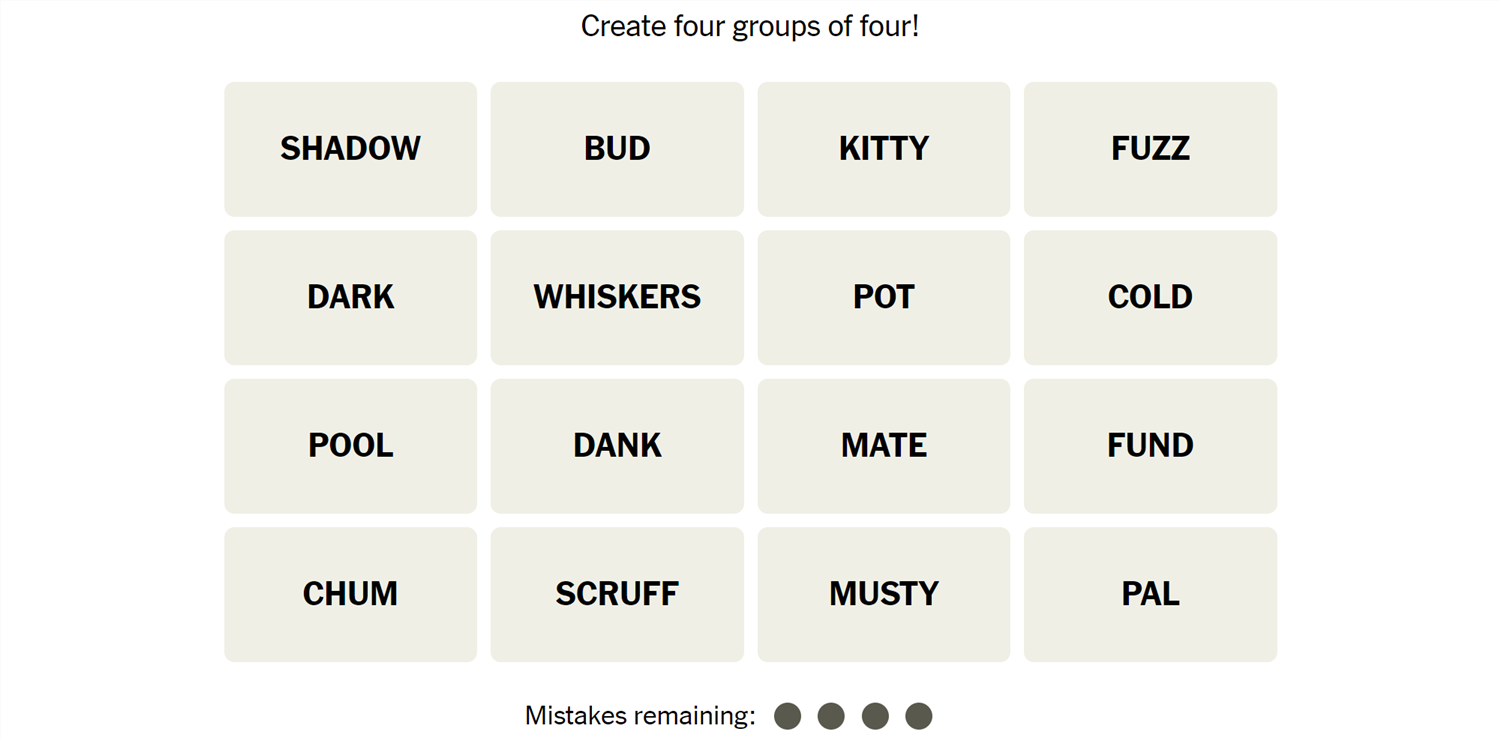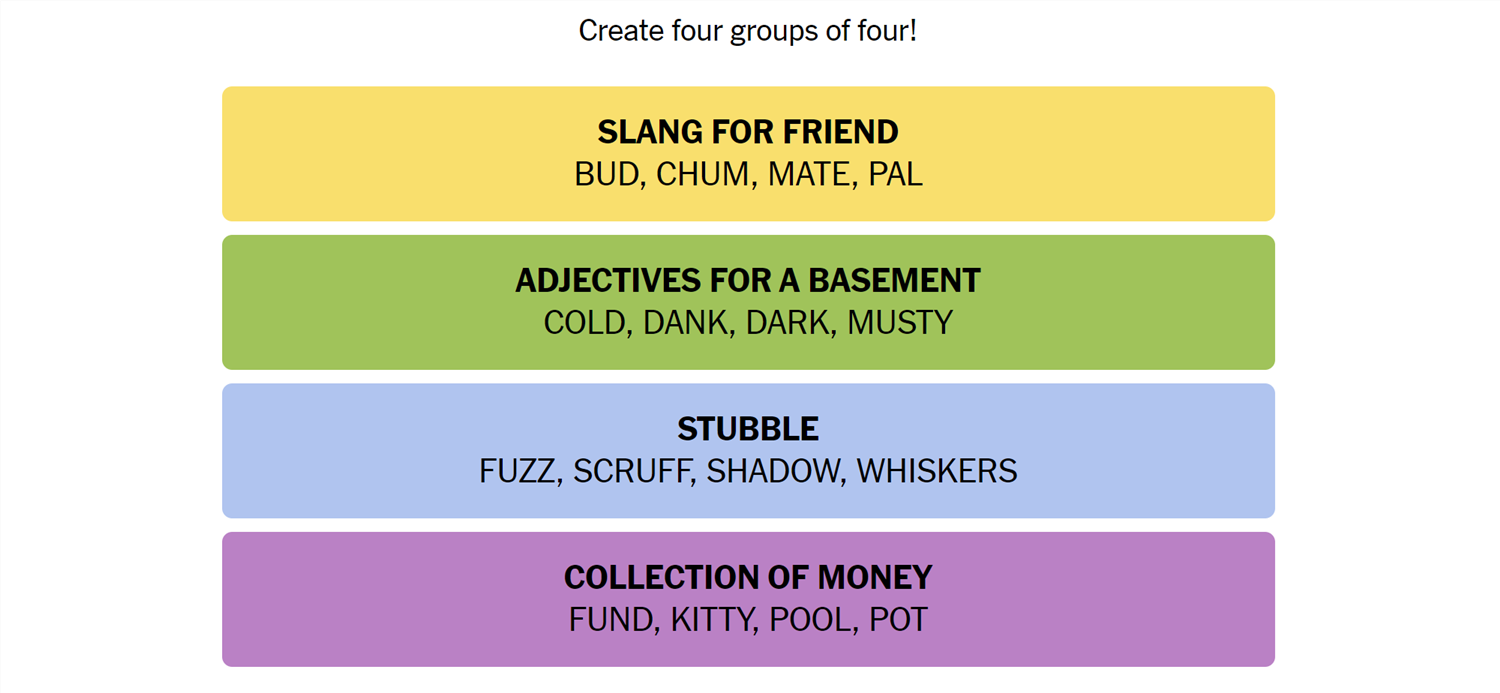Connections is a game from the New York Times that challenges you to find the association between words. It sounds easy, but it isn’t—Connections categories can be almost anything, and they’re usually quite specific. If you need a hand getting the answers, we’ve got you covered.
What Is Connections?
Connections is a game from the New York Times. The objective is simple: sort 16 words into groups of 4. Each group of words will be connected by some common idea or theme. That common element could be anything. We have seen everything from games that rely on the number of letters in the words to categories that require you to spot an extra letter at the end of the word. Sometimes they’re references to economics, other times they reference fairy tales. There is no telling what sort of association there will be between words.
Once you’re confident you understand the connection, select 4 words, then hit “Submit.” You have only four attempts in total, so don’t be too guess-happy.
Hints for Today’s Connections Categories
Here are a few small hints for the 316th Connections game to get you started:
- Yellow: Amigos.
- Green: The lowest level.
- Blue: The first stage of growing back.
- Purple: Cash.
What Are Today’s Connections Categories?
If you still need help, the actual categories are:
- Yellow: Slang for Friend
- Green: Adjectives for a Basement
- Blue: Stubble
- Purple: Collection of Money
Today’s NYT Connections Answers
Slang for Friend (Yellow):
Bud, Chum, Mate, Pal
Adjectives for a Basement (Green):
Cold, Dank, Dark, Musty
Stubble (Blue):
Fuzz, Scruff, Shadow, Whiskers
Collections of Money (Purple):
Fund, Kitty, Pool, Pot
How Did We Solve This Connections Game?
April 22nd’s game felt slightly harder than most of the games over the weekend.
The first category we noticed was Yellow: “Slang for Friend.” Pal, pal, and mate were pretty straight forward. Chum was the only one that could sometimes fit the theme, so we went with that.
Next, we spotted cold, dank, dark, and musty. Our first instinct was that they were words related to caves. However, Green was actually “Adjectives for a Basement.” Close enough.
Fuzz, scruff, and whiskers were evocative of cats. That specific train of thought lead us to consider kitty, too, but it doesn’t really fit—kitty is a synonym for cat, not a word associated with cats. After mulling it over for a bit, we realized that the category wasn’t about cats—it was talking about facial hair. Once we made that jump, shadow (as in 5 o’clock shadow) was pretty obvious. The Blue category was “Stubble.”
The last 4 words were obvious fund, pool, kitty, and pot, but the link wasn’t immediately obvious. Fund, pool, and pot can all refer to “Collections of Money,” but kitty is much less commonly seen in this context. Of course, it isn’t surprising that Purple was harder.
How Do You Guess Connections Categories?
There is no quick, reliable way to approach Connections like there is with Wordle, since Connections isn’t algorithmic. However, there are a few things to keep in mind that can help.
- Look for similar parts of speech. Are some words verbs and others nouns? Are some adjectives? Try mentally grouping them based on those categories and see if any other patterns jump out at you.
- Are the words synonyms? Sometimes categories will just be synonyms for a phrase, or very close to synonyms. Don’t rely too closely on this, though. Occasionally, Connections will deliberately throw in words that are sometimes synonyms to mislead you.
- Try saying the words. Sometimes, saying the words helps. One puzzle we saw included the words go, rate, faster, clip, pace, speed, move, commute, and hurry—all of which are obviously related to the idea of motion. However, when you say them, it becomes a little more obvious that only four (go, move, hurry, faster) are things you’d actually say to prompt someone to get moving.
- Expect the red herring. Connections usually has words that could be plausibly, yet incorrectly, grouped together. Take the words Bud, Corona, and Light, as an example. You might instinctively see those three words together and assume they’re lumped together in a category related to beer—but they weren’t.
- Look for distinct words. If a word on your board doesn’t have multiple meanings or can really only be used in one context, try using that word as the basis for a category.
- Shuffle the board. Sometimes, moving words around will help you look at them in new ways.
If you didn’t solve this one, don’t feel too bad—there’s always tomorrow! And those words may align with a topic you’re interested in, giving you a leg up on the competition.



